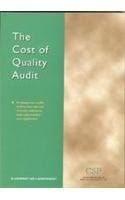Question
Rexcam is a partnership owned by Wilson, Watts, and Franklin that manufactures special machine tools used primarily in injection molding applications. The partnership had operated
Rexcam is a partnership owned by Wilson, Watts, and Franklin that manufactures special machine tools used primarily in injection molding applications. The partnership had operated very profitably for the first five years of existence. However, in the last two years, 2009 and 2010, the company has been challenged by foreign competition and pricing pressures. During this time, Franklin, acting as the chief financial officer, began to have difficulty dealing with the financial pressures at work and issues in his personal life. Franklin had a fatal heart attack in early January of 2011, and the partnership agreement required the partnership to pay a deceased partners estate: (a) five times the deceased partners average annual share of profit based on the three years prior to death plus (b) 50% of their capital balance as of the year-end prior to date of death. The amount due to the deceased partners estate was to be determined by an outside independent accountant. Assuming you have been retained as the outside accountant, the following errors and/or irregularities associated with Franklins accounting for the company have come to your attention:
1. During 2009 and 2010, sales of $25,000 and $75,000, respectively, were recorded as being made to Alcor Corporation. Alcor is a fictitious company that was set up by Mr. Franklin.
2. A physical inventory was taken at the end of both 2009 and 2010. Although the quantity of goods on hand was accurate, the physical quantities were incorrectly priced resulting in an overstatement of ending inventory in 2009 and 2010 of $35,000 and $75,000, respectively.
3. Annual casualty insurance premiums were $80,000 for 2010. However, the insurance carrier was only paid $20,000 even though it was recorded as though the entire premium had been paid. The difference of $60,000 that was not paid was then recorded as a payment toward the outstanding fictitious account receivable balance of Alcor Corporation [see item (1) above].
4. The coverage period for the liability insurance policy is from April 1 through March 31. A premium payment of $36,000 for the policy period beginning April 1, 2009, was made in March of 2009 and recorded as prepaid insurance. At the end of 2009, the recorded prepaid insurance balance was $15,000. The policy premium of $39,600 of the policy period beginning April 1, 2010 was paid in March of 2010. At the end of 2010, the recorded balance in the prepaid insurance account was $19,200.
5. At the end of each calendar quarter of 2009, every partner received a draw of $50,000. At the end of each calendar quarter of 2010, every partner received a draw of $10,000. However, at the end of the second and third quarters of 2010, Franklin paid himself an additional draw of $20,000 each quarter. The additional draws were recorded as equipment acquisitions that were depreciated by the straight-line method over a 5-year period.
6. In the last quarter of 2010, the company received a payment from a customer in the amount of $42,000. However, rather than correctly recording this as a payment on account, Franklin recorded it as a cash sale.
Profits and losses of the partnership are allocated according to the following:
1. Salaries to each of the partners of $150,000 per year.
2. Interest on weighted-average capital, after consideration of draws, at the rate of 10%. If the weighted-average capital is negative, interest at 10% will be charged against the partners profit allocation.
3. A bonus to Wilson equal to 10% of sales over $1.5 million per year.
4. Remaining balance to be allocated 30%, 35%, and 35% to Wilson, Watts, and Franklin, respectively.
5. If profits are not adequate, all provisions of the agreement will be satisfied, and any deficiency is to be allocated to the partners according to their profit and loss percentages.
At the end of 2008, the company reported profit of $590,000 of which $190,000 was properly allocated to Franklin. After all closing entries, the year-end 2008 capital balances were $300,000, $250,000, and $200,000 for Wilson, Watts, and Franklin, respectively. As initially reported by Franklin, the income of the partnership was $500,000 and $480,000 for the years 2009 and 2010, respectively, on sales of $1.65 million and $1.58 million for the years 2009 and 2010, respectively.
Prepare a schedule to determine the correct amount the partnership should pay to the estate of Franklin.
Step by Step Solution
There are 3 Steps involved in it
Step: 1

Get Instant Access to Expert-Tailored Solutions
See step-by-step solutions with expert insights and AI powered tools for academic success
Step: 2

Step: 3

Ace Your Homework with AI
Get the answers you need in no time with our AI-driven, step-by-step assistance
Get Started


